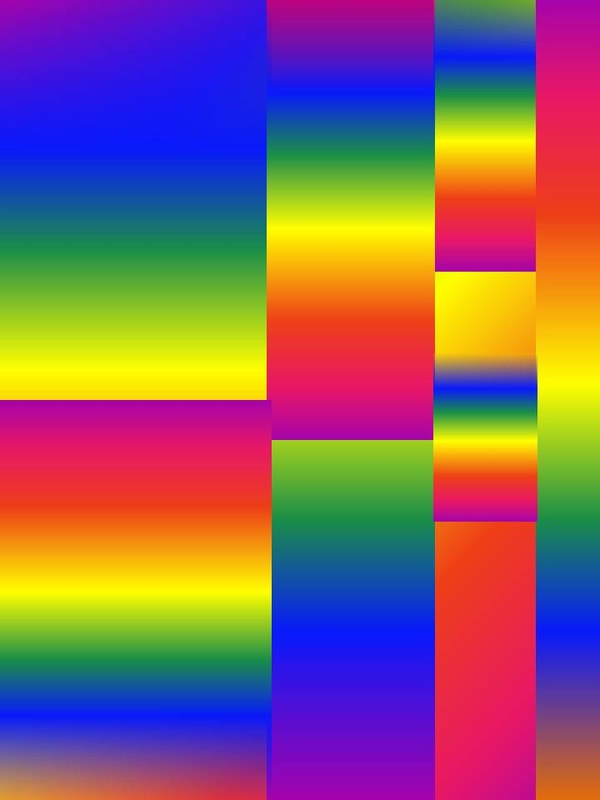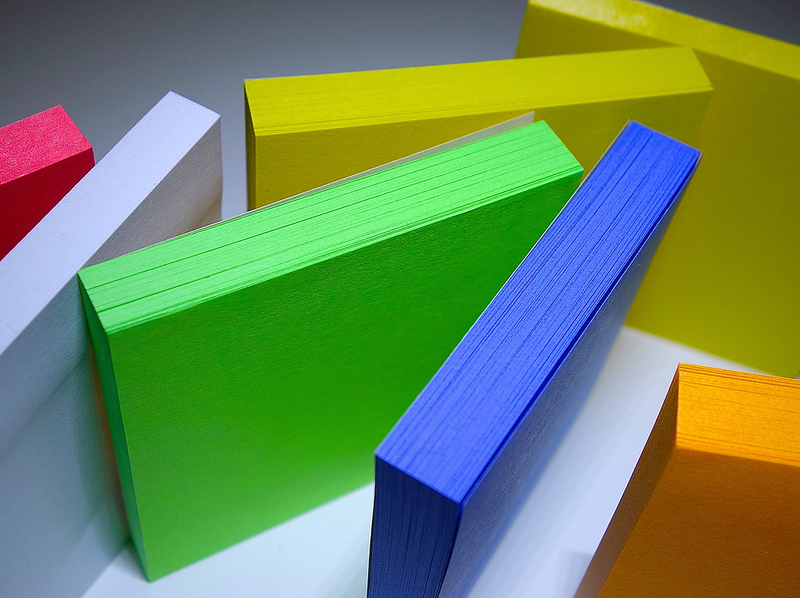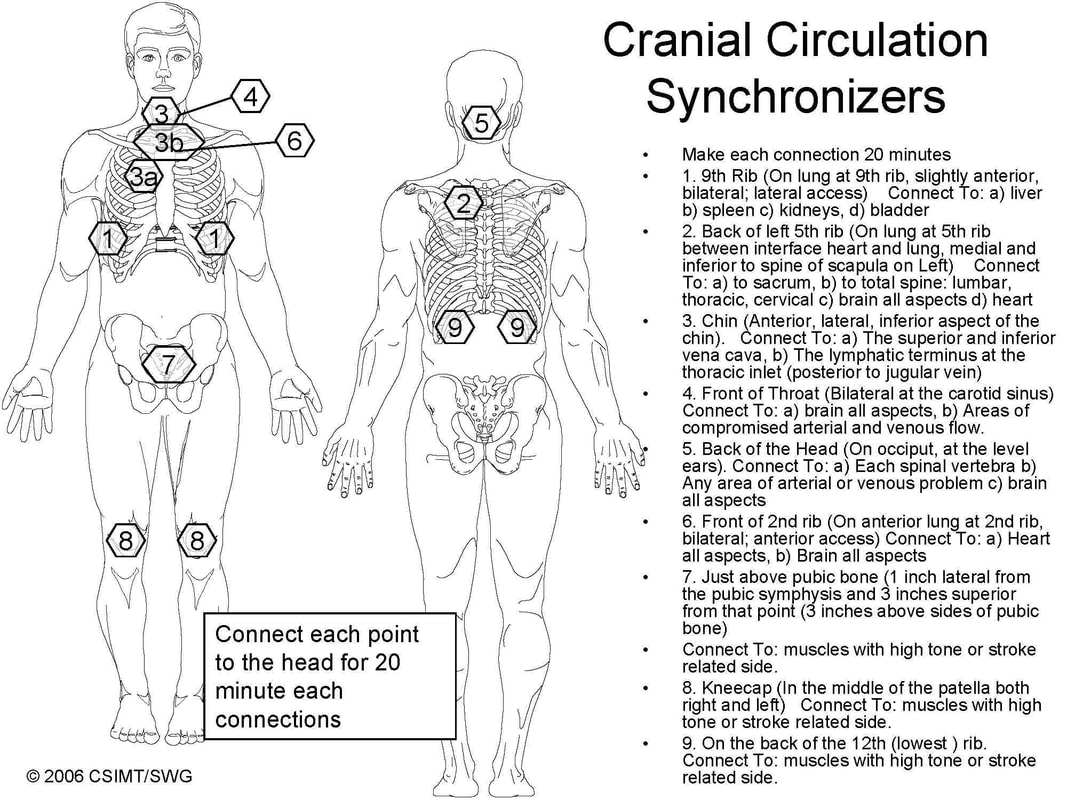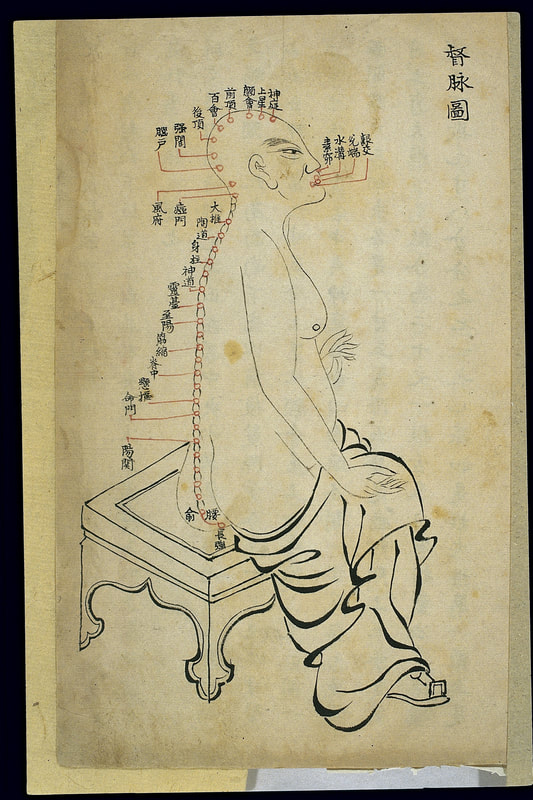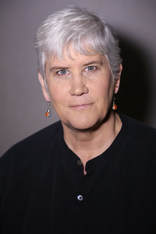|
0 Comments
Light
Turning on at work darkest day just beginning power gratitude Here is a Haiku counter to help design your own haiku about the environment or sustainability http://www.haikusyllablecounter.com/ Memories are created through a combination of brain power and clarity, the intake of sensory information, and attention or consciousness. If there is a problem with the brain, memories are not retained. If there is a problem with the sensory system, the eyes, ear, sense of touch, taste and smell then the experience is muted and less easily remembered. If one does not pay attention, say to where they put down their keys, remembering is more difficult. Improving blood flow to the brain, eye, and body can improve the experience of life and the way we remember events. Here are three ways to improve blood flow. [Read More]
This next section is meant for you to look up the image and work with each of the points outlined. The research abstracts are just for information. If there are things you don't understand—don't worry about it.
The gallbladder meridian runs from the side of the eye, near the temple (at the outer canthus of the eye. It loops down and up to the forehead within the hairline and descends behind the ear to the corner of the skull. This wood meridian returns to the forehead arcing across the side of the head and descends to the back of the head, then down the side of the body. It meets the Bladder Meridian (water element) at the sacrum and runs down the outside of the leg and ends on the 4th toe. [Images at https://theory.yinyanghouse.com/acupuncturepoints/gallbladder_meridian_graphic] Gallbladder "Under the strict control of experimental conditions and fixation of electrical acupuncture stimulation parameters, the changes of hepatic bile output were observed in five different stages before, during and after acupuncture, and compared with those in control group not treated by acupuncture. The results showed that electrical acupuncture of Ganshu (Back-Shu point) (GB 18) and Qimen (Front-Mu point) (LI 14) could obviously promote the secretion of hepatic bile. The immediate effect was superior to that in other groups. In a group not treated by acupuncture, hepatic bile output gradually decreased as time went on. In animal experiment, a model of bile pigment lithogenesis was made in guinea pig. The animals were randomly divided into five groups of control, simultaneous acupuncture, simultaneous moxibustion, re-acupuncture after one week and re-acupuncture after two weeks. The results indicated that electrical acupuncture or moxibustion of relevant acupoints such as Ganshu (GB 18) and Qimen (LI 14) could really very effectively inhibit the animal lithogenesis caused by lithogenesis food. A tendency was observed towards that the earlier acupuncture was performed, the better the preventive effect on lithogenesis. In the influence on lithogenesis bile, both acupuncture and moxibustion could reduce the contents of biliary total bilirubin and free bilirubin and the activity of biliary beta-glucuronidase. Acupuncture also produced an effect in lowering hepatic beta-glucuronidase but moxibustion didn't. Hepatohistological observation showed that lithogenous food could also cause fatty degeneration of liver, and moxibustion could markedly inhibit its progress. Both acupuncture and moxibustion didn't remarkably influence the content of serum cholesterol." Zhang, S., H. Chen, et al. (1995). "[Clinical and experimental researches in the inhibition of bile pigment lithogenesis by acupuncture and moxibustion]." Zhen Ci Yan Jiu 20(3): 40-45. Gallbladder (GB) 18 Located on the top of the head straight back from each eye, just in front of a line crossing the top of the head from ear tip to ear tip. In the parietal region, on a curved line drawn between Toulinqi GB-15 and Fengchi GB-20, following the contour of the cranium, 1.5 cun posterior to Zhengying GB-19, directly lateral to Baihui Du-20. In a study to observe the effect of acupuncture of Jianjing (GB 21) and non-acupoint on gallbladder volume and clinical symptoms of chronic cholecystitis patients, researchers noted, "After acupuncture intervention, the remission rates of shoulder-back pain and stomachache in non-acupoint and GB 21 groups were 56.67% and 90.00% respectively, while the effective rates of the patients' gastric distention and nausea in non-acupoint and GB 21 groups were 16.67% and 23.33%, respectively. The therapeutic effect of Jianjing (GB 21) was apparently superior to that of non-acupoint in pain relief. Acupuncture stimulation of Jianjing (GB 21) can effectively relieve shoulder-back pain and stomachache, and regulate the volume of the deflated and expanded gallbladder in cholecystitis patients. The effect of acupuncture of non-acupoint is relatively poorer in relieving the cholecystitis patients' symptoms and regulating the gallbladder volume. Wen, F. Y., S. C. Li, et al. (2012). "[Effects of acupuncture of Jianjing (GB 21) on gallbladder volume and symptoms of cholecystitis patients]." Zhen Ci Yan Jiu 37(5): 398-402. Gallbladder (GB) 21 is located at the top of the shoulders half way between the rotator cuff (outer edge of the shoulder) and the vertebrae column (spine). In an electroacupuncture study of the effect on the gallbladder of two points (Yanglingquan (Gallbladder 34) and Yinlingquan (Spleen 9) acupoint on white blood cell (WBC) count and gallbladder wall thickness in rabbits with acute cholecystitis, Researchers noted, "Compared with the control group,WBC count and gallbladder wall thickness of the model group were significantly increased, and those changes were reversed by EA intervention at either GB 34 or SP 9 acupoints. As to WBC count, there was no significant difference between EA-GB 34 and EA-SP 9 groups (P>0. 05), whereas for reducing gallbladder wall thickness, EA stimulation at GB 34 acupoint resulted in a better effect than that of EA at SP 9 acupoint. EA produces positive therapeutic benefits on acute cholecystitis in rabbits. It seems that stimulation at "Yan - glingquan" acupoint gives rise to a better effect than that of "Yinlingquan" acupoint in particular for the reduction of gallbladder wall thickhess." Zhou, M. L., W. R. Jia, et al. (2015). "[Effect of Electroacupuncture at "Yanglingquan" (GB 34) Acupoint on White Blood Cell Count and Gallbladder Wall Thickness in Rabbits with Acute Cholecystitis]." Zhen Ci Yan Jiu 40(3): 233-237. Gallbladder (GB) 34 is located near the outer side of the knee in a depression anterior (in front of) and inferior (below) the head of the fibula (thinner bone on the outer side of the lower leg). Head Symptoms In a study to observe and evaluate the clinical effect of acupuncture at "Siguan" combined with the Gallbladder Meridian acupoints on migraine, researchers noted, "The observation group was treated with acupuncture at "Siguan" including Hegu (LI 4) and Taichong (LR 3), combined with the Gallbladder Meridian acupoints including Fengchi (GB 20), Shuaigu (GB 8), Qiuxu (GB 40) and Zulinqi (GB 41), while the control group was treated with acupuncture at the Gallbladder Meridian acupoints, including Fengchi (GB 20), Shuaigu (GB 8), Qiuxu (GB 40), Zulinqi (GB 41), Yanglingquan (GB 34) and Hanyan (GB 4). At the end of the treatment, the total effective rate was 95.2% (40/42) in the observation group and 80.0% (36/45) in the control group, which had statistical difference (P<0.05). After 3-month follow-up, the total effective rate was 88.1% (37/42) in the observation group and 75.6% (34/45) in the control group, which had no statistical difference. The "Siguan" combined with the Gallbladder Meridian acupoints could significantly relieve the migraine intensity, frequency and lasting time, and its improvement of symptoms and short-term efficacy are superior to those of the Gallbladder Meridian acupoints alone. Lin, X. M., X. Yao, et al. (2014). "[Acupuncture at "Siguan" combined with Gallbladder Meridian acupoints for migraine: a randomized controlled trial]." Zhongguo Zhen Jiu 34(10): 947-950. Gallbladder (GB) 20 is located near the base of the skull behind the ear in a depression between the upper portion of the sternocleidomastoid muscle and the trapezius. Gallbladder (GB) 8 Superior to the apex of the auricle, 1.5 cun within the hairline (1/2 ear length from the apex). Gallbladder (GB) 40 At the outside of the ankle, anterior and inferior to the external malleolus (big bump on outside of ankle) in a depression on the lateral side of the tendon of extensor digitorum longus Gallbladder (GB) 41 Top of the foot near the fourth toe, posterior to the 4th metatarsophalangeal joint in a depression lateral to the tendon of extensor digiti minimi Gallbladder (GB) 34 is located near the outer side of the knee in a depression anterior (in front of) and inferior (below) the head of the fibula (thinner bone on the outer side of the lower leg). Gallbladder (GB) 4 Side of the forehead in front of the ear, within the hairline of the temporal region at the junction of the upper 1/4 and lower 3/4 distance between ST 8 and GB 7. Vision In a study to investigate the dynamics underlying the sustained effect of acupuncture as a possible explanation of earlier findings that acupuncture stimulation at the vision-related acupuncture point, GB37, researcher's findings from this study suggest that "acupuncture at GB37 can induce complex brain activity in the vision cortex. The state-related neural signal may reflect one of the significant characteristics underlying acupuncture." Liu, J., J. Nan, et al. (2013). "Additional evidence for the sustained effect of acupuncture at the vision-related acupuncture point, GB37." Acupunct Med 31(2): 185-194. Gallbladder (GB) 37 Near the outer ankle, on the lateral aspect of the lower leg, 5 cun (finger widths) above the tip of the external malleolus (bony bump on the outside of the ankle), on the anterior border of the fibula (smaller outer bone in the lower leg). "Acupoint specificity is one of the central issues of functional magnetic resonance imaging (fMRI) studies of acupuncture and has been under discussed. However, strong and consistent proof has not been provided for the existence of acupoint specificity, and unsuitable analysis approach applied could be the reason. We observed that previous researches of acupoint specificity were mostly based on model-based methods which were limited to make exploration of acupoint specificity because of the inaccurate specified prior. Here we applied multi-voxel pattern analysis (MVPA) to investigate the specificity of brain activation patterns induced by acupuncture stimulations at a vision-related acupoint (GB37) and a nearby nonacupoint (NAP). Results showed that multiple brain areas could differentiate the central neural response patterns induced by acupuncture stimulation at these two sites with higher accuracy above the chance level. These regions included occipital cortex, limbic-cerebellar areas and somatosensory cortex. Our results support that the characteristic neural response patterns of brain cortex to the acupuncture stimulation at GB37 and a nearby NAP could differ from each other effectively with the application of MVPA approach." Li, L., W. Qin, et al. (2010). "Exploring vision-related acupuncture point specificity with multivoxel pattern analysis." Magn Reson Imaging 28(3): 380-387. Another study compared the differences in the efficacy on distant version of naked eye in the patients of juvenile myopia between rotating manipulation and lifting-thrusting manipulation of acupuncture neddling. The points worked with included: Cuanzhu (BL 2),Yuyao (EX-HN 4), Sizhukong (TE 23), Taiyang (EX-HN 5), Fengchi (GB 20), Zusanli (ST 36), Guangming (GB 37) and Sanyinjiao (SP 6). Researchers noted, "Acupuncture achieves the positive and sustainable clinical effect on juvenile myopia, and the results of rotating manipulation are superior to that of lifting-thrusting manipulation. Age, basic vision and duration of sickness impact the clinical efficacy. Tao, X. Y., B. Y. Zhao, et al. (2014). "[Impacts of rotating or lifting-thrusting manipulation on distant vision of naked eye in patients of juvenile myopia: a randomized controlled trial]." Zhongguo Zhen Jiu 34(5): 465-468. Gallbladder (GB) 20 is located near the base of the skull behind the ear in a depression between the upper portion of the sternocleidomastoid muscle and the trapezius. Gallbladder (GB) 37 Near the outer ankle, on the lateral aspect of the lower leg, 5 cun (finger widths) above the tip of the external malleolus (bony bump on the outside of the ankle), on the anterior border of the fibula (smaller outer bone in the lower leg). Zheng H, Chen M, Wu X, Li Y, Liang FR. Manage migraine with acupuncture: a review of acupuncture protocols in randomized controlled trials. Am J Chin Med. 2010;38(4):639-50. Shin MS, Kim JI, Lee MS, et al. Acupuncture for treating dry eye: a randomized placebo-controlled trial. Acta Ophthalmol. 2010 Dec;88(8):e328-33. doi: 10.1111/j.1755-3768.2010.02027.x. Epub 2010 Nov 10. Takayama S, Seki T, Nakazawa T, et al. N. Short-term effects of acupuncture on open-angle glaucoma in retrobulbar circulation: additional therapy to standard medication. Evid Based Complement Alternat Med. 2011;2011:157090. Epub 2011 Mar 7. PubMed PMID: 21437193
If you have a circulatory issues, blood flow problem like Carpal Tunnel Syndrome or Swollen ankles here is what some of the research is saying can help: Complementary and Alternative Medicine, physical exercise and balancing blood sugar, qigong movements, yoga, integrative manual therapy synchronizers, craniosacral or cranial therapy, manual lymph drainage, osteopathic manual medicine, acupressure and more.
1 Explore Complementary Medicine for Circulation Issues, Heart Attacks, and Strokes
Once a stroke has happened there are dietary factors, exercises, acupuncture, Qigong, Integrative Manual Therapy, Reiki, Yoga and more CAM options to consider. Every 45 seconds a person in the US has a stroke. It is the third leading cause of death in Western society, affecting 700,000 Americans and killing150,000 people a year. There are lots of ways to decrease your risk factors for a stroke. Cost can be a significant factor in the use of complementary and alternative medicine (CAM) approaches. One 1996 study found, "a combined treatment with acupuncture, Shiatsu and lifestyle adjustment may be highly cost effective for patients with advanced angina pectoris (heart dysfunction)." --Acupunct Electrother Res (1996) https://www.ncbi.nlm.nih.gov/pubmed/9051166
Physically Exercise and Balance Blood Sugar
A recent article on 5 Best Things noted the benefits of physical exercises, balancing blood sugar, and acupressure points. —More Health Research on 5 Best Things https://5bestthings.com/author/kimberly/ A further study noted the effect of low blood sugar on working memory. "During hypoglycaemia [low blood sugar], memory activation task performance was associated with increased activity in the frontal lobe regions [thinking brain], superior parietal lobe and thalamus [feeling brain], and decreased activity in the temporal lobe regions [sensing and hearing brain]. Working memory activation statistically significantly increased blood flow in the striatum during hypoglycaemia. Altered performance was associated with significantly increased blood flow in the striatum, a part of the basal ganglia implicated in regulating motor functions, memory, language and emotion." —Diabetologia (2017) https://www.ncbi.nlm.nih.gov/pubmed/29188338
3 Qigong Reduces the Need for Medications and the Heart's Electrical Activity
Qigong researchers are doing studies using sophisticated blood flow and cranial imaging equipment such as a Doppler sonography, EEG and near_infrared spectroscopy. What they are finding is that this Chinese meditation exercise appears able to change blood flow in the head. —Neurol Res (2001) https://www.ncbi.nlm.nih.gov/pubmed/11474806 In a study on the use of Qigong in combination with medications, researchers found the hands-on and energetic techniques of qigong to be beneficial in reducing cardiovascular problems and strokes. They noted, "the therapeutic role of qigong exercises combined with drugs is reported for three medical conditions that require drug therapy for health maintenance: hypertension, respiratory disease, and cancer. In these studies, drugs were administered to all patients who were divided into two groups, a group that practiced qigong exercises and a control group that did not. Taken together, these studies suggest that practicing qigong exercises may favorably affect many functions of the body, permit reduction of the dosage of drugs required for health maintenance, and provide greater health benefits than the use of drug therapy alone. For hypertensive patients, combining qigong practice with drug therapy resulted in reduced incidence of stroke and mortality and reduced the dosage of drugs required for blood pressure maintenance. —J Altern Complement Med (1999) https://www.ncbi.nlm.nih.gov/pubmed/10471019 Another study suggested, "Qigong exercise could significantly decrease the abnormal electrical activity in the heart and improve blood flow to the coronary artery (the arteries that supply the heart muscle). It can also decrease heart dysfunction after a heart attack." --Zhongguo Zhong Xi Yi Jie He Za Zhi (1992) https://www.ncbi.nlm.nih.gov/pubmed/1392492
Daily 17 min Qi Gong practice with Mingtong Gu
4 Yoga and Acupuncture Effect on Blood Chemistry
Chemists looked at the blood chemistry in hatha yoga practitioners by evaluating their breathing response to hypercapnia (too much carbon dioxide in the blood) and arterial blood gases during ujjai respiration (yogic breathing) of once per minute for an hour. The average adult take 12 to 18 breaths per minute, which is a big difference from one breath per minute. The results suggest that professional hatha yoga practitioners have less sensitivity to high levels of carbon dioxide in the blood because their practice has allowed them to adapt to "low arterial pH and high levels of CO2 for long periods." —Jpn J Physiol (2002) https://www.ncbi.nlm.nih.gov/pubmed/12230808 Another study looked at the effect of acupuncture on calcium levels, researchers concluded, "Electro-acupuncture could regulate the content of Ca2+ in the ischemic area of the brain, inhibit Ca2+ overload, so as to protect neurons from ischemic injury." —Zhongguo Zhong Xi Yi Jie He Za Zhi (2002) https://www.sciencedirect.com/science/article/pii/S0254627217300523 Stroke is an example of ischemic injury, where a part of the brain does not get the oxygen that it needs to function and some of the brain cells die.
5 Muscle Function, Yoga, and Circulation
Stress, muscle spasm in the vascular wall and peripheral blood pressure all affect the risk for strokes, heart attacks and other cardiovascular problems. A number of complementary and alternative medicine approaches have been shown to be beneficial in decreasing the risk of cardiovascular incidence. In a 2004 study, the Berg Balance Scale and Timed Movement Battery tested improvements with yoga, leading researchers to conclude, "the results suggest that yoga may be beneficial to people who have had a stroke." —Phys Ther (2004) https://academic.oup.com/ptj/article/84/1/33/2805327 A course in yoga and meditation was given to 33 people with and without coronary artery disease for an hour and a half, three times a week for 6 weeks. The participants were encouraged to continue practicing at home. Researchers found, a significant reductions in blood pressure, heart rate, and Body Mass Index (BMI) in the total group with yoga. —Clin Cardiol (2006) https://www.ncbi.nlm.nih.gov/pubmed/17007170 Another yoga related study looked at the short-term impact of a comprehensive but brief lifestyle intervention, based on yoga. The subjects had history of hypertension, coronary artery disease, diabetes mellitus, obesity, psychiatric disorders (depression, anxiety, 'stress'), gastrointestinal problems (non ulcer dyspepsia, duodenal ulcers, irritable bowel disease, Crohn's disease, chronic constipation) and thyroid disorders (hyperthyroidism and hypothyroidism) or were healthy without any of these conditions ... The intervention consisted of Asanas, Pranayama, relaxation techniques, group support, individualized advice, and lectures and films on philosophy of yoga, the place of yoga in daily life, meditation, stress management, nutrition, and knowledge about the illness. "Among the diseased subjects significant improvement was seen in the anxiety levels of patients of hypertension, coronary artery disease, obesity, cervical spondylitis and those with psychiatric disorders. The observations suggest that a short educational program for lifestyle modification and stress management leads to remarkable reduction in the anxiety scores within a period of 10 days." —Indian J Physiol Pharmacol (2006) https://www.ncbi.nlm.nih.gov/pubmed/16850902 Another study found that Yoga lifestyle intervention slows or stops the progression of damage to the heart blood vessels in people with severe coronary artery disease. It also improves symptoms, what the person is able to do and some of the risk factors important in preventing another circulation related event. —J Assoc Physicians India (2000) https://www.ncbi.nlm.nih.gov/pubmed/11273502
6 Acupuncture Helps People Avoid Complications of Stroke
In China stroke is the second most common cause of death in cities and the third in rural areas. World wide it is a major cause of disability. Acupuncture for stroke has been used in China for hundreds of years and is increasingly practiced in Western countries, with beneficial effects. Noting that more acupuncture research is need, scientists in China found that fewer people died or needed to be institutionalized, as a result of the stroke. They said, "when acupuncture was compared with sham acupuncture or open control, there was a borderline significant trend towards fewer patients being dead or dependent in the acupuncture group after three months or more." —Zhang, S. H., M. Liu, et al. (2005). "Acupuncture for acute stroke." Cochrane Database Syst Rev(2): CD003317 from http://stroke.ahajournals.org/cgi/content/full/36/10/2327. Another acupuncture study found that pain caused by a lack of blood flow to an area, can be decreased by acupuncture. Researchers noted, clinical experience and controlled studies confirmed the efficacy of acupuncture in various pain syndromes, including tension headache, migraine, trigeminal neuralgia, posttraumatic pain. They suggest favorable effects in the rehabilitation of peripheral facial nerve palsy, Bell’s Palsy and stroke. "There is sufficient evidence of acupuncture to expand its use into conventional medicine and to encourage further studies of its pathophysiology and clinical value." 2. Jellinger, K. A. (2000). "[Principles and application of acupuncture in neurology]." Wien Med Wochenschr 150(13_14): 278_85. A functional MRI study, found acupuncture affects several parts of the brain, including the "left superior frontal gyrus, anterior cingulate gyrus, and dorsomedial nucleus of thalamus."3 Yoo, S. S., E. K. Teh, et al. (2004). "Modulation of cerebellar activities by acupuncture stimulation: evidence from fMRI study." Neuroimage 22(2): 932-40. The thalamus is the part of the brain where we most experience pain and other sensations. The data suggested that the cerebellum (part of our sense of balance) serves as an important area activated during treatment of certain acupuncture (PC6) points.
7 Manual Therapy and Heart Rehabilitation
While a third study noted, the addition of manual therapy as an early rehabilitation measures after coronary artery bypass surgery "eliminates postoperative anginal [heart] attacks in 70% cases, reestablishes balance of cellular and plasma components of hemostasis, enhances fibrinolytic activity. The addition of manual therapy in the rehabilitation complex is recommended early after bypass surgery." —Ter Arkh (2000) https://www.ncbi.nlm.nih.gov/pubmed/11201824 8 Manual Therapy and Energy Work as an Adjunct in Stroke Rehabilitation In a study looking at the use of Reiki in stroke rehabilitation programs, researchers found that the biggest benefit of the Reiki came in the form of mood and energy improvements. — J Altern Complement Med (2002) https://www.ncbi.nlm.nih.gov/pubmed/12614528 In a study looking at manual therapy, researchers found, "treating the patients with drugs in combination with manual therapy resulted in improved circulation in the vertebral artery bed, lower clinical signs of vertebrobasilar insufficiency." —Kardiologiia (1991) https://www.ncbi.nlm.nih.gov/pubmed/1753586 Some of the signs of problems with the vertebrobasilar arteries, a pair of blood vessels running up the neck into the head, is dizziness, headaches and trouble concentrating. Another further study looked at Manual Lymph Drainage (MLD) and found it "causes vessel narrowing followed by increased blood flow in the arterioles, capillaries and venulae of the skin as well as in peripheral arteries and an increased lymph flow in lymphatic collectors." —Z Lymphol (1989) https://www.ncbi.nlm.nih.gov/pubmed/2672666 Lymph drainage techniques are often very gentle, soothing hands-on techniques that increase the flow and detoxification of the lymphatic fluid. There are lymph vessels throughout the body with the highest concentration around the neck, armpits and fronts of the hips. A dysfunction of the lymph vessels is what contributes to swelling in the arms of the person who has had surgery for breast cancer. Normalizing the flow in the delicate lymph vessles can significantly inprove drainage and decrease swelling.
9 Reflex Points for Vascular Function, IMT & Strokes
In 1973, Kamenetskii did a study looking at the value of therapies using reflex points to improve vascular tone after a stroke. —Vopr Kurortol Fizioter Lech Fiz Kult (1973) https://www.ncbi.nlm.nih.gov/pubmed/4747487 Integrative Manual Therapy practitioners use reflex point for clinical treatment and for self-care programs with clients with cardiovascular dysfunctions. These reflex points have names like "Synchronizers" (Giammatteo, T., & Weiselfish-Giammatteo, S. (1997). Integrative manual therapy for the autonomic nervous system and related disorders: utilizing advanced strain and counterstrain technique. Berkeley, Calif.: North Atlantic Books) "Hypothalamus Regulation Mechanisms", and "Reference Points". They are used to improve cranial circulation and decrease muscle spasm during the course of the treatment of people with strokes, post heart attacks, migraines and other cardiovascular conditions. One Integrative Manual Therapy course focuses on improving function of the muscles and systems of the body in someone with a stroke. Another training program focuses on normalizing blood flow in the head and addresses the neurological dysfunction caused by the stroke. In a case report on the use of Integrative Manual Therapy with a 78 year old man with high blood pressure and a recent stroke, the clinician noted, "prior to therapy, the patient presented with slurred speech, decreased comprehension, and loss of balance in walking. The patient's main goal was to be discharged from the hospital. The man was treated with several Cranial Therapy techniques. After the treatment was completed, the patient presented with significant improvements in speech and comprehension and an improvement in balance during walking. The patient was discharged from the hospital the very next morning." —Dillon, D. A. (2003) The Benefits of Integrative Manual Therapy on Speech Impairment and Balance Secondary to Stroke, from www.centerimt.com/e_journal/articles/ej00063.htm The therapist continued, "To be released from the hospital, he has to be able to answer questions clearly without slurring his speech as well as be able to show he is no longer confused in his thinking, and be able to walk without balance problems." In another case of a baby who had a stroke, the parents reported, "Andy had a stroke just prior to his birth. We were told he might never sit up unassisted, walk, run, or speak. We sought out therapists to help Andy. When he was 9 months old, we brought him to The Center for Integrative Manual Therapy and Diagnostics (CenterIMT). We visited for 2 days, about 8 hours of therapy. The following day Andy began to crawl for the first time. Subsequent trips have given him the abilities to walk, jump, run and speak. He was originally diagnosed as a hemiplegic (limited use of his entire left side). Throughout CenterIMT and follow_ups with his incredible occupational and physical therapy team at home, Andy has shown significant abilities with his left hand and fingers. He has increased mobility overall, and cognitively has begun to read and write at the age 4." Another therapist reports, "I made mom stay up late Sunday night, so I could work on her before bed. I used the nervous system reflex techniques (LEVO). She had very remarkable results. Her neck and shoulder pain is gone. But the big change was her blood pressure which has dropped from a very consistent 180/80 to 140/78. She is much more comfortable now. Most of her health problems surfaced after an auto accident with a neck injury. Her medical diagnosis is unexplained vasospasm of the vertebrobasilar artery in the neck."
Integrative Manual Therapy Synchronisers for Circulation and Cardiovascular Issues. Call or Email for a free 20-30 minute consultation on their use or to explore your health goals for 2018.
Acupressure for BaiHui or GV 20 at the Crown Chakra
"Acupressure for Bai Hui consists simply of resting our middle fingers lightly on the point, as support for bringing our mental attention to rest gently there." —Acupressure Treasures: Bai Hui - Hundred Convergences (2017) https://www.thoughtco.com/acupressure-treasures-bai-hui-hundred-convergences-3182275 Another research study indicated that stimulating the Baihui point improves function in people after a stroke, acting to protect the brain and nervous system (neuroprotector). "Acupuncture stimulation at the Baihui acupoint for 4 weeks increased dopamine levels in the brain tissue of chronic cerebral hypoperfusion rats and of cerebral ischemia-reperfusion injured rats. The acupuncture stimulation also reduced brain atrophy [shrinkage] after cerebral infarct [stroke], suggesting that acupuncture stimulation at the Baihui acupoint acts as neuroprotector." —Am J Chin Med (2007) https://www.ncbi.nlm.nih.gov/pubmed/17963318
Request a Free Report on Circulation and Complementary Medicine.
Email Kimberly Burnham at NerveWhisperer@gmail.com Connect with Kimberly Burnham on Social Media or Email for a Free Report on Brain Health Exercises, Mention your top 8 Health Goals for 2018. |
Kimberly Burnham, PhD (Integrative Medicine)
860-221-8510 phone and what's app. Skype: Kimberly Burnham (Spokane, Washington) NerveWhisperer@gmail.com 4 Month Brain Health Coaching Package $600 includes: 8 one hour session (twice a month) plus ... Details Here
Regular Rate $120 per hour
Free 20-30 minute consultations available.. Call 860-221-8510 PST or email NerveWhisperer@gmail.com for an appointment this week.
Archives
January 2018
Categories
All
|
